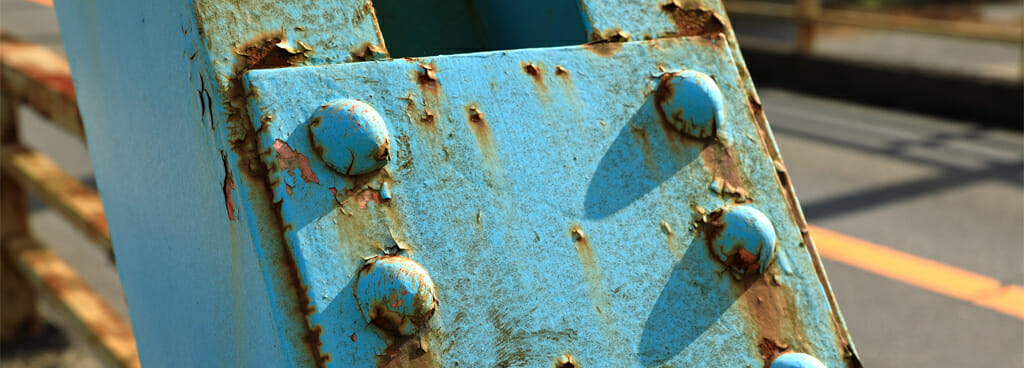- Home
- Services/IndustriesServicesindustries
- About Us
- LocationsStatesAccordion ContentAccordion ContentAccordion ContentAccordion Content
- Job Openings
- Quick Links
- ATS Family

The Critical Importance of a Good Bridge Inspection
Applied Technical Services performs UT- and phased array-assisted bridge inspections, bringing these advanced analysis methods to ensure these critical pieces of infrastructure remain safe and functional. Bridges require regular inspection for fatigue damage due to the stresses they face every time they are used. Rivets, welds, cover plates, and a variety of other components can face assault from cracking or corrosion, each of which would undermine the structural integrity of these elements over time and potentially fail if undetected and untreated. Once an ATS inspector is notified of one of these indications or locates one, often using drone-assisted visual inspections for the latter, he or she may opt for a closer assessment using more advanced methods of NDT, such as ultrasonic testing (UT) or phased array UT (PAUT).
ATS' UT and Phased Array Capabilities
UT works by using a transducer to pulse sound waves through a material and a receiver to interpret information about those sound waves once they return. Because the sound waves harmlessly propagate through the entire material before bouncing back, UT can detect subsurface features such as cracks by moving the probe over the material’s surface. Our technicians can use this method to determine a variety of features in the subject, including:
- Location of Discontinuities
- Length of Discontinuities
- Material Thickness
- Coating Thickness
- Presence of Corrosion
A regular UT inspection schedule required by good engineering practices can help bridge-owners prevent failure throughout this infrastructure’s service life.
Phased array is an extension of UT that brings new capabilities to the existing method. Introducing more transducers, each pulsing at a consistent but staggered tempo which is controlled by an oscillator, yields more information faster. Phased array also excels in areas where technicians have limited access to the material’s surface, as the micro-processing unit can change the intervals of the oscillations to sweep the waves across the material without ever moving the probe.
These NDT methods can consistently locate defects as small as one eighth of an inch long, enabling our inspection teams to alert bridge owners of potential issues early. Because so much of any bridge inspection takes place below the deck, most providers require costly or disruptive access methods, such as snooper trucks or scaffolding, to assess super- and substructure elements. Our rope access capabilities augment our bridge inspection services, allowing us to perform UT and phased array on components beneath the deck quickly and safely.
About Us
Applied Technical Services has supplied the greater-Atlanta area with our consulting engineering expertise since our founding in 1967. The intervening five decades have seen our company grow astronomically — once a trio of engineers working alongside local companies from the confines of the founder’s basement, ATS now offers the services of over 1,000 inspectors, calibrators, technicians, forensic investigators, scientists, trainers, chemists, and Professional Engineers to meet the needs of clients operating around the world. We perform all UT and phased array inspections in compliance with our ISO 9001-certified quality management system. ATS also maintains ISO 17025 accreditation to perform both single-element and phased array UT to a variety of standards.
While bridges always require attention to ensure their continued safety, you need the most thorough nondestructive testing available once an indication has been found. You can trust ATS with your bridge inspection — We take a closer look!

Request Form
"*" indicates required fields
Engineering Links
- Asbestos Abatement Plan Design
- Asbestos Survey and Consulting Services
- ASME B30.10 Crane Hook Inspections
- Atlanta Lightning Protection
- Bridge Inspection Companies
- Bridge Structural Steel Weld Inspections
- Building Envelope Consultants
- Building Envelope Consulting Services
- Building Envelope Engineering
- Building Envelope Testing
- Building Inspection Company
- California Scaffold Inspections
- Commercial Engineering Services
- Commercial Structural Engineer Inspection
- Construction Materials Testing
- Consulting Structural Engineering Services
- Engineering Consulting Services
- EPA Certified Lead Abatement Contractors
- Equipment Failure Analysis
- Exposed Structure
- Fall Hazard Training
- Fall Protection Equipment Inspection
- Fit for Service - FFS Assessment
- Fitness for Service
- Flood Damage Inspections
- GPR Contractors
- GPR Inspection Services
- GPR Scanning Concrete
- GPR Scanning Services
- Ground Penetrating Radar (GPR) Survey
- High Energy Piping
- Indoor Air Quality Assessment
- Indoor Air Quality Experts
- Indoor Air Quality Measurement
- Lead Abatement Contractors
- Lightning Protection for Building Design
- Lightning Protection Services
- Marine Structural Engineer
- Modal Analysis Testing
- Mold Inspection and Testing
- Mold Testing Companies
- NACE Coating Inspector
- Parking Structure Repair
- Penstock Inspections
- Professional Mold Testing
- Property Condition Assessment Consultants
- RBI - Risk Based Inspections
- Roof Fall Prevention Systems
- Roofing Fall Protection
- Safety Harness Inspections
- Storm Structural Evaluations Engineering
- Structural Design Services
- Structural Engineering
- Structural Engineering Services
- UT and Phased Array Bridge Inspections
- Washington DC Lightning Protection
- Water Damage Inspection
